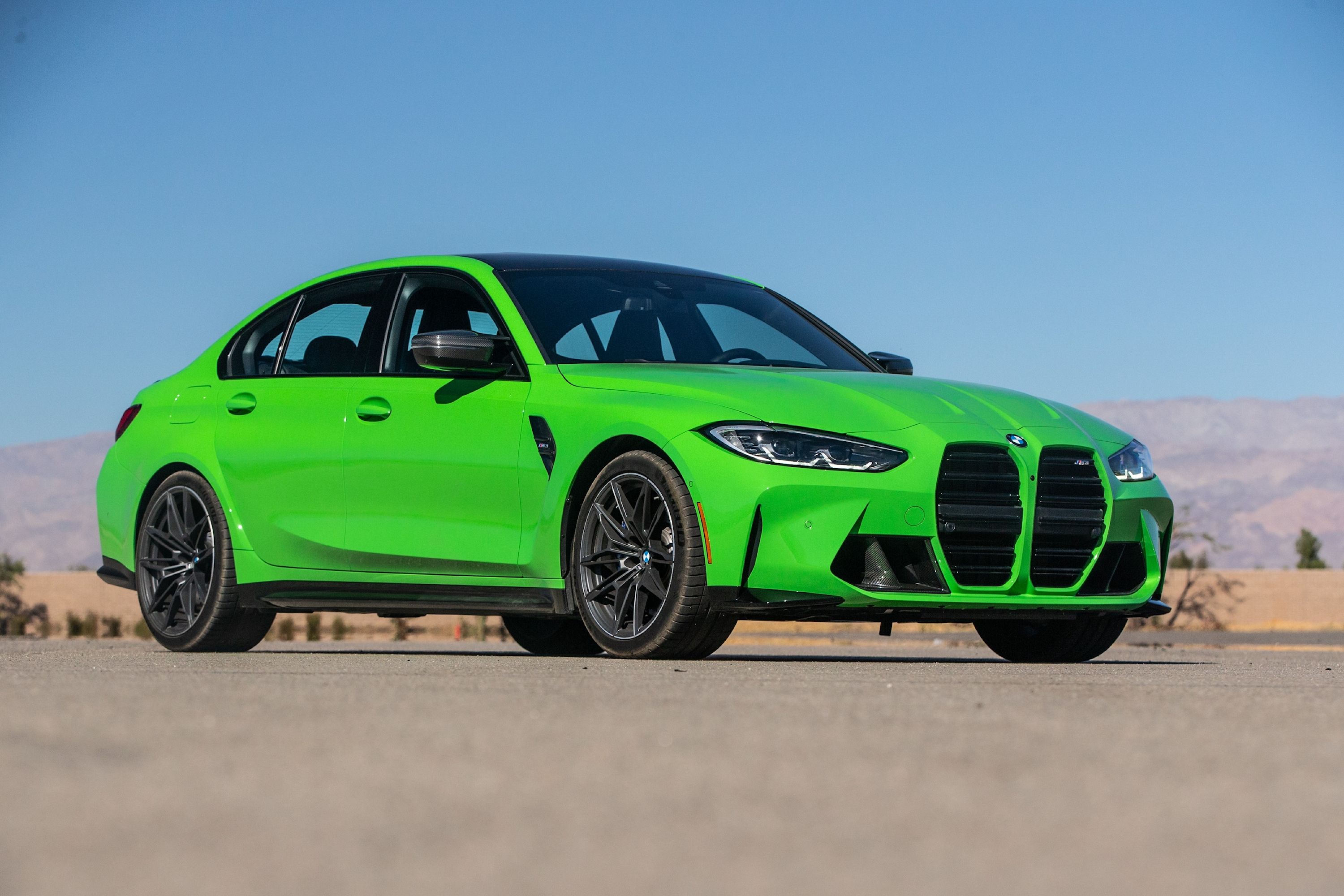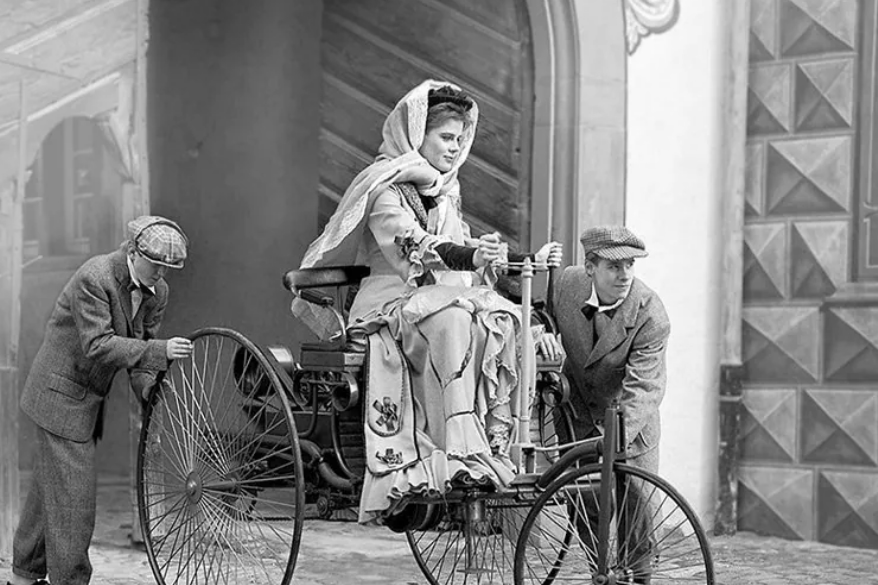The best way we can introduce this list of badass women in car culture is to say these are the people you absolutely should know about, and their stories are a lot longer than the summaries given here. This list could be a lot longer as so many women in car culture's history haven't been given the respect they earned. A lack of outer genitalia has thwarted many more, so, at best, this is an admittedly incomplete list and will deserve at least one follow-up. The following list is a great place to start if you're interested in plumbing the side of automotive culture that history often leaves in the shadows.
1. Bertha Benz
Let's start close to the beginning of automotive history with Carl Benz's wife, Bertha. While Carl was a gifted and forward-thinking engineer, he wasn't a great businessman. He had presented the world with the first car as we know it, but failed to consider its marketing. Thankfully, he was married to a savvy and pioneering woman. On August 5, 1888, Bertha Benz, aged 39, fired up the Model III Motorwagen and embarked on the first car journey of significant distance - and without permission from the authorities or Carl Benz's knowledge.
Until Bertha decided to take history into her own hands, powered vehicles were typically driven short distances and with a team of mechanics. Bertha was confident in the car and her abilities and traveled 66 miles (the one-way distance) to Mannheim as her own mechanic. The fuel tank didn't exist, so she had to find fuel when petrol pumps weren't a thing while performing maintenance such as clearing a fuel pipe blockage and fixing failed brakes. Bertha was so on top of the game that she stopped at a cobbler's store and had him add leather to the wooden brake blocks, thus inventing the lined brake pad.
2. Joan Newton Cuneo
Joan Newton Cuneo was an American trailblazer in car racing. She was born in Massachusetts in 1876, and in her early life, her father taught her to drive a steam train and coach using a six-horse team. However, the times caught up with her. She was sent to boarding schools to shape her as a "Victorian woman." In 1898, Joan married a banker named Andrew Cuneo, and they had two children. Then, everything changed again when Andrew bought Joan a steam-driven car built by the Locomobile Company of America. She learned how to maintain and drive it, then took part in the 350-mile 1905 Glidden Tour. Her initial application for the race was rejected as she was a woman, but she resubmitted the application noted nothing in the rules mentioned gender. Cuneo was competitive and won races, but in 1909 the Contest Board of AAA banned her completely from sanctioned competition under its banner.
Outside of the AAA, Cuneo became the fastest woman in the world by hitting 111.5 mph, then set more records after that. She had the respect of male race car drivers but faded away after her husband's bank failed and he was involved in a scandal involving a showgirl. Ultimately, the male establishment won, but she made her statement, and it still reverberates today.
3. Hellé Nice
Between 1928 and 1939, Hellé Nice added "motor racing" to a resume that already included being a model and dancer. The French woman competed in all kinds of races, including Grand Prix events - despite a severe crash in Brazil in 1936. She mainly drove for Bugatti and was incredibly successful financially and professionally, but Nice's story was cut short after World War II. In 1949, her fellow Bugatti driver, Louis Chiron, accused her loudly at a party of being a "Gestapo agent" during the war. There was no evidence to support his claim, and none has been discovered since, but it stuck and rendered Hellé Nice unemployable. She died penniless and alone in a rat-infested hovel in Nice, France, where she lived out her final days under an assumed name. If there were any justice, Bugatti would name a car after memory.
4. Pat Moss
Pat Moss's place in automotive history as one of rallying's most successful female drivers. Her brother, Stirling Moss, is more well known for his Formula 1 exploits, but his sister was her own person. Pat Moss started out as a showjumper and made the British showjumping team. However, she had learned to drive aged 11, then when she turned 18 in 1953, she took up rallying and bought a Triumph TR2 to race the following year. She approached Triumph for factory support on the British RAC Rally in 1955 but was turned down. MG saw the opportunity, though, and furnished her with a works MG TF 1500 and expenses to go racing. She promptly claimed three championships.
As a BMC works driver, her first big success was driving a Morris Minor to 4th place on the RAC Rally in 1958. She carried on competing in the top end of top-tier rally driving, later for Ford and then Saab with her husband, Erik Carlsson. Before retiring, she also drove for Lancia and Renault. The modern Mini brand celebrated her achievements recently with a Pat Moss Edition.
5. Michèle Mouton
When it comes to badass women in more modern times, Michèle Mouton comes straight to mind. Group B rallying was the most exciting sport in the world in the 1980s, and Juha Kankkunen famously said, "WRC is for boys. Group B was for men." However, he forgot that the French woman Michèle Mouton competed in Group B and set it on fire. She earned the nickname "Black Volcano" from the German press due to her fiery temper and long black hair, and "La Femme qui Dérange," from the French, which is hard to translate directly but referred to her ability to emasculate men on the track.
She battled chauvinism constantly as well as the talent of other drivers, and the examples are legion. Ari Vatanen said in 1981 that "The day I will be beaten by a woman, I will stop racing." She beat him at the San Remo rally, and he didn't retire. In 1982, driving the legendary Audi Quattro, she won three championship rounds and was chasing down equally legendary Walter Röhrl and nearly had him but for mechanical failure. After rallying, she entered the Pikes Peak hill climb event; she was the first and only woman at the time of writing to win, and set a new record.
6. Danica Patrick
Unfortunately, Danica Patrick still doesn't get the respect she deserves, despite being the most successful woman in American open-wheel racing and still being the only female race winner in IndyCar racing history. In 2010, Patrick moved to NASCAR and went on to claim the most top-ten finishes by a woman in the Sprint Cup Series in 2015. She never won a NASCAR race but clinched many firsts for a female racer, including a Cup Series pole position in the Indy 500, where she finished eighth. A common criticism is that she consistently ran mid-pack with forays into the top 10 at races. The best reply is another question: "How many IndyCar and NASCAR races have you qualified for?" Patrick was a trailblazer for women in both series, and she made money doing so, just like the men.
7. Jessi Combs
Jessi Combs wasn't just an American professional racer and television personality. She was also a metal fabricator and the fastest woman on four wheels. Combs earned the final title in 2013, then beat the women's 4-wheel speed record again in 2016 by hitting 477.59 mph in the American Eagle. In more traditional racing, Combs competed and was successful in various events, including the Baja 1000 and King of the Hammers. Lee Breedlove had set the original 4-wheel record in 1965, and if we had more space here, she would also be on this list.
Tragically, while trying to lodge a land speed record, Combs was killed in a crash on August 27, 2019. Her final run before the crash clocked in at 522.783 mph across Oregon's Alvord Desert. In June of 2020, the Guinness Book Of Records verified the record, and Combs posthumously became the fastest woman on the planet, irrespective of the number of wheels. The previous record was set by another legendary trailblazer and inspiration for Combs, Kitty O'Neil.
8. Sabine Schmitz
German professional motor racing driver Sabine Schmitz was affectionately known as Queen of the Nurburgring. Having grown up in one of the villages located within the famous race track, she became one of the most accomplished female drivers ever. She was the first woman to attain an overall win at the 24 Hours of Nurburgring in 1996, piloting a BMW M3. This was just one of several highlights in a glittering career in which she drove for both BMW and Porsche. She entrenched herself as a household name following several appearances on the BBC's Top Gear, and, as a 'Ring Taxi driver, she logged an estimated 30,000 laps around the Nordschleife. Besides her obvious talent behind the wheel, Schmitz endeared herself to all with her deep motoring knowledge and quick wit. Sadly, Schmitz lost her battle with cancer last year.


